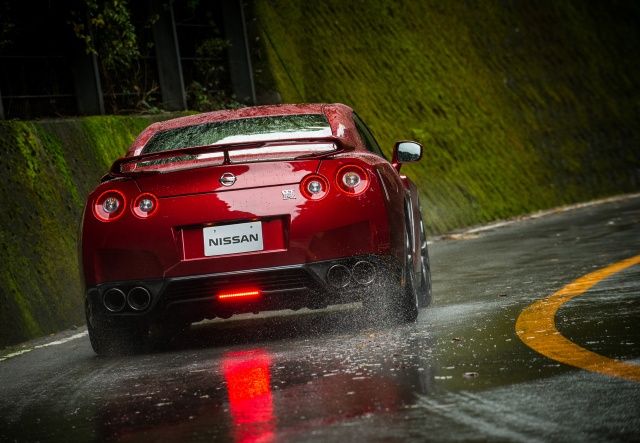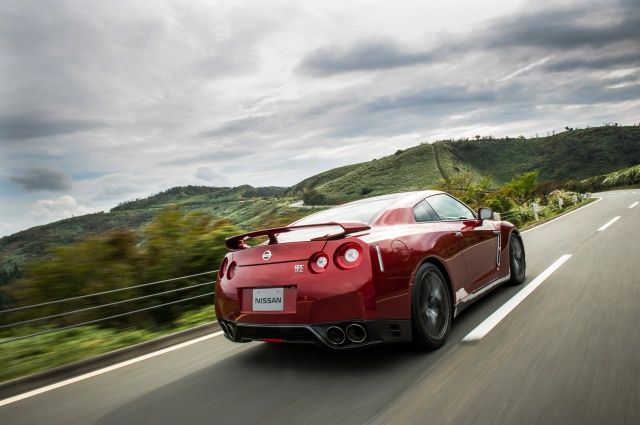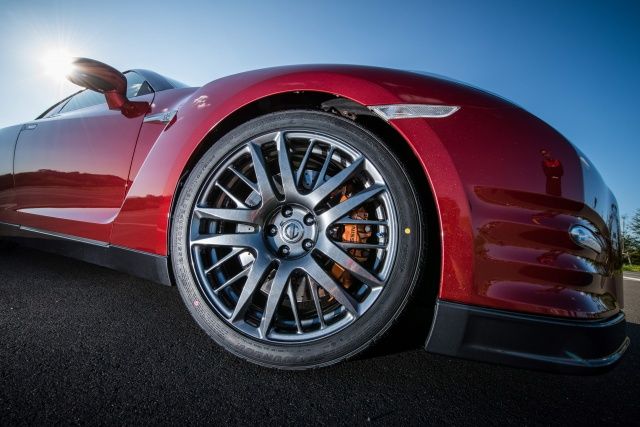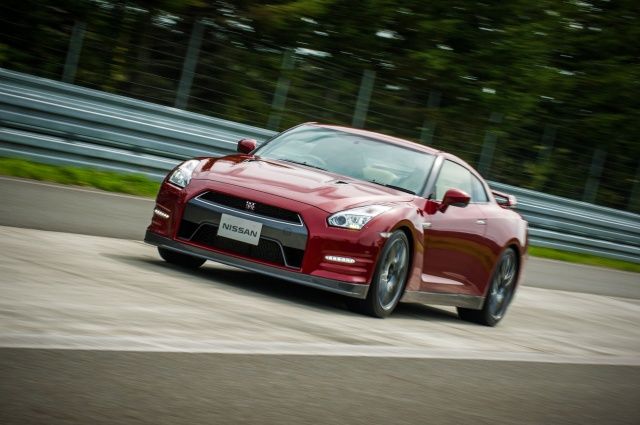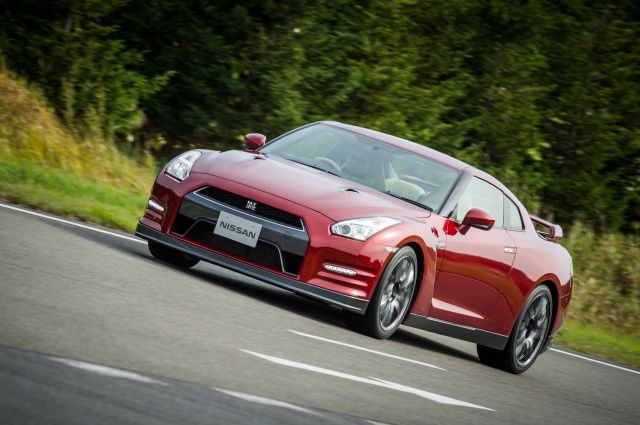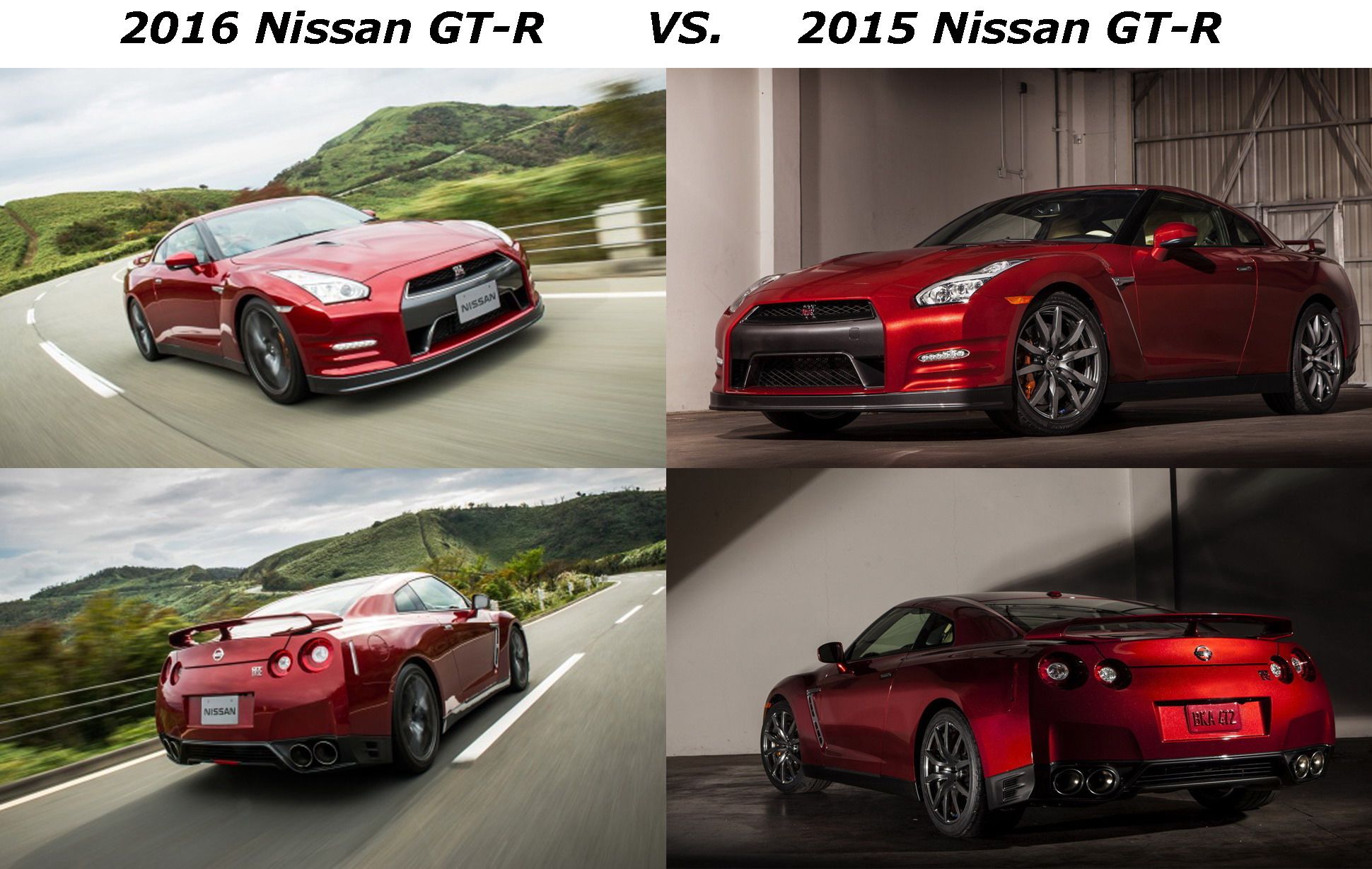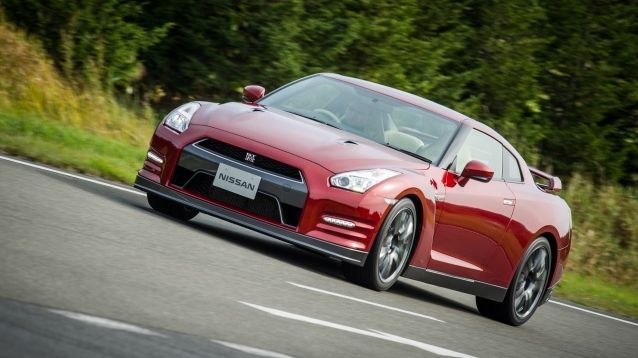Nissan->ke62 entered the select group of high-performance manufacturers back in 1969, when the first-generation Skyline GT-R was introduced. Initially available only as a four-door sedan->ke142, the Skyline GT-R quickly made a name for itself on the street and the track, evolving into a coupe->ke141 that went on to dominate the local motorsport scene. The R32 was the first to make an impact in other markets, with the R33 and R34 models enhancing the GT-R's aura abroad. The sports car->ke506 we all know today was launched in 2007, five years after Nissan decided to separate the GT-R line from the Skyline name. Already eight years old, the current GT-R is quietly awaiting for its hybrid successor to arrive, while receiving mild updates to keep it fresh for a few more years. For 2016, Nissan has introduced yet another update, which is already available for the Japanese market as a 2015 model year before traveling across the Pacific and into U.S. dealerships.
The revised GT-R is basically an undercover 2015 model, with no major upgrades inside and out. The familiar, 3.8-liter, V-6 engine carries over unchanged as well, but the lack of drivetrain updates is counterbalanced by numerous enhancements in the suspension and brake department. All told, the 2016 GT-R is a more stable and precise sports car ready to tackle race tracks the world over for a few more years.
Updated 03/16/2015: Nissan announced prices for the 2016 GT-R sports car which is now available at select dealers in the United States. Price will start from $101,770 for the GT-R Premium version and will go up to $149,990 for the GT-R Nismo versions.
Click past the jump to read more about the 2016 Nissan GT-R.
2016 Nissan GT-R
- Make: Array
- Model: 2016 Nissan GT-R
- Engine/Motor: V6
- Horsepower: 545 @ 6400
- Torque: 463 @ 3200
- Transmission: Dual clutch sequential 6-speed
- [do not use] Vehicle Model: Array
Exterior
As Nissan focuses on enhancing the performance of the GT-R's suspension system and tires, the car's exterior remains essentially the same. There's a set of slightly revised headlamps up front, but, surprisingly enough, the automaker didn't give it any upgrades in the aerodynamics department. Around back, the horizontal light unit on the diffuser represents the only novelty for 2016.
Sure, the current-gen GT-R is popular enough to go on without changes for a couple more years, but it would've been nice had Nissan added at least a few new colors. There is, however, a new twin-spoke Rays wheel design in a Hyper Blue Black chrome finish, but only as an option for the Premium trim.
Speaking of trims, Nissan added the Track Edition trim, which comes with several exterior and drivetrain parts engineered by Nismo. On the outside, the Track Edition receives flared front fenders and Rays forged, aluminum-alloy wheels.
Side-by-side comparison
Interior
Just like the exterior, the interior of the 2016 model year GT-R carries over unchanged. However, customers will get to enjoy a quieter cabin, as noise and vibration have been significantly reduced thanks to the revised drivetrain management system and the redesigned flywheel housing bearings. There's also a new trunk carpet to help reduce noise in the cockpit.
The revised suspension system and the upgraded tires also provide improved ride quality, a feat that customers planning to use the GT-R on a daily basis will most likely salute.
Drivetrain
Although the 2016 GT-R comes with retuned engine and transmission management systems, as well as revised flywheel housing bearings, the twin-turbo, 3.8-liter V-6 outputs the same amount of power as the model it replaces. A total of 545 horsepower and 463 pound-feet of torque travel to the wheels through the same six-speed, DCT.
It's safe to assume the GT-R remains amazingly fast, needing only three seconds to sprint from naught to 60 mph and up to a top speed of 196 mph. Fuel efficiency remains unchanged at 16 mpg in the city and 23 mpg on the highway.
Drivetrain Specifications
|
Designation |
VR38DETT |
|
Cam configuration |
DOHC |
|
Orientation |
Longitudinal |
|
Cylinders / configuration |
V6 |
|
Block / head composition |
Aluminum/Aluminum |
|
Displacement (liters) |
3.8 |
|
Horsepower |
545 HP @ 6,400 RPM |
|
Torque lb-ft |
463 LB-FT @ 3,200 – 5,800 RPM |
|
Bore & stroke (mm) |
95.5 x 88.4 (Plasma sprayed bore) |
|
Compression ratio (:1) |
9.0 |
|
Maximum engine speed |
7,000 RPM |
|
Transmission |
Dual clutch sequential 6-speed rear transaxle, magnesium paddle shifters, gear pre-selection |
Suspension and Brakes
The 2016 GT-R may not feature added horsepower and torque, but the sports car comes with improved cornering stability and more precise steering by means of revised damper rates for the shock absorbers and modified ECU settings. The new Dunlop run-flat tires with improved inner structure also contribute for better stability at high speeds and increased stability over uneven road surfaces. Improved ride quality is yet another feat that comes with the new rubber.
In the braking department, Nissan introduced a new shim structure between the brake pads and caliper pistons, as well as redesigned brake pads. The upgrades improve braking feel and reduce braking noise without sacrificing performance.
The Track Edition benefits from all of the above plus custom suspension settings, a bespoke stabilizer, higher spring rates, and a set of Dunlop SP Sport Maxx GT 600 DSST tires.
Prices
Launched only in Japan for the time being, the updated GT-R retails from JPY9.5 million, which converts to $80,500 as of 11/26/2014. The Premium Edition costs from JPY10.6 million ($89,938), while the Track Edition is priced from JPY11.7 million ($99,455).
The U.S. prices are as follow:
|
GT-R Premium |
$101,770 USD |
|
GT-R Black Edition |
$111,510 USD |
|
GT-R NISMO |
$149,990 USD |
Competition
Porsche 911 Turbo
The GT-R's No. 1 competitor is the iconic 911 in its Turbo guise. Also motivated by a 3.8-liter engine, but with a flat-six cylinder configuration, the 911 Turbo cranks out 520 horsepower in its base version, which is enough for a 0-to-60 sprint of 3.2 seconds (3.0 with the Chrono package) and a top speed of 195 mph. Customers in need of more power can go with the Turbo S, which comes with 560 ponies, a 2.9-second benchmark to 60 mph, 0.1 seconds faster than the GT-R's, and a top speed of 197 mph.
Besides an iconic badge, the 911 Turbo also boasts a more luxurious interior, as well as a host of state-of-the-art technologies. All these feats come at a price though, as the German sports car retails from $151,100 in Turbo guise and $182,700 in Turbo S trim.
Audi R8 V10 Plus
The V10 Plus is currently the range-topping version of Audi's only super sports car. The uprated, 5.2-liter, V-10 engine churns 550 horsepower, which is a 25-pony improvement over the standard V10 model. But although the mill cranks out five additional horses when compared to the GT-R, the V10 Plus is slower from naught to 60 mph, reaching the benchmark in 3.7 seconds, 0.7 seconds slower than the Japanese coupe. Top speed sits at 198 mph.
The Audi is inferior as far as fuel economy goes as well, returning only 12 mpg in the city and 19 mpg on the highway. On the other hand, the R8's interior is packed with luxury amenities and race-inspired features. The V10 Plus retails from $173,500, a $70,000 premium over the Nissan GT-R.
Conclusion
The 2016 update might not be significant at first glance, but we can't blame Nissan for not meddling with the car's drivetrain. The GT-R is quick enough as is and you shouldn't expect massive output upgrades until the current-generation model is replaced. Sure, a few aerodynamic updates would've made the GT-R more appealing to new customers, but the improved cornering stability, the more precise steering and the quieter cabin are nothing to sneeze at.


